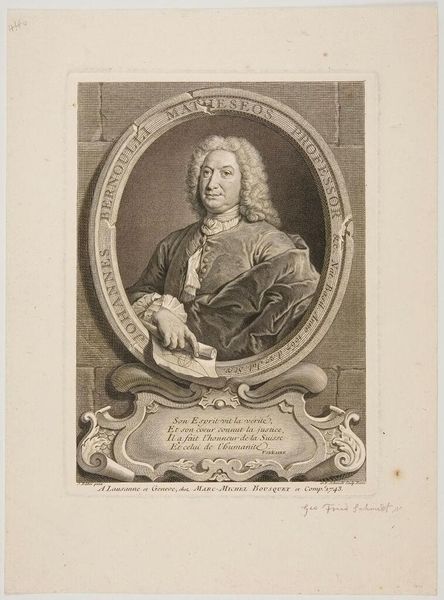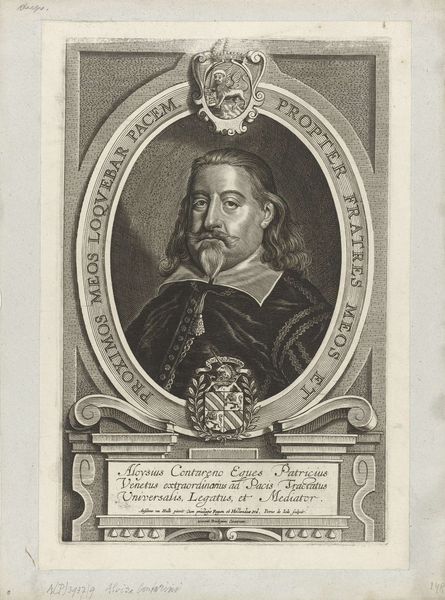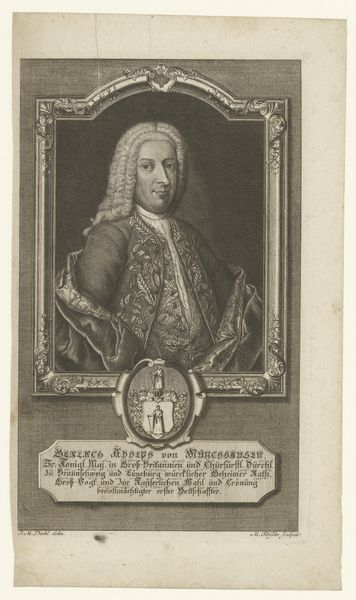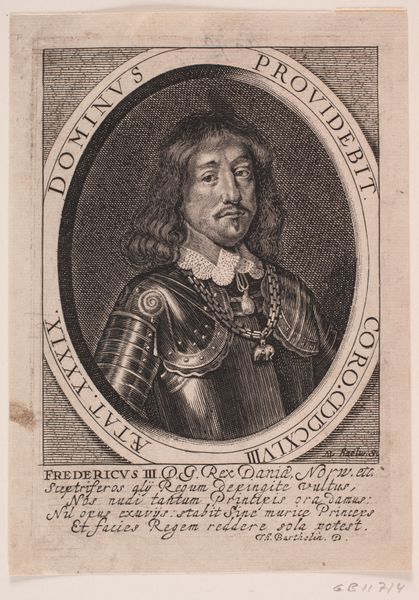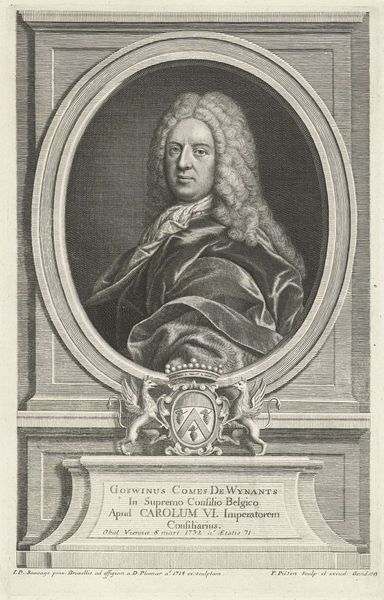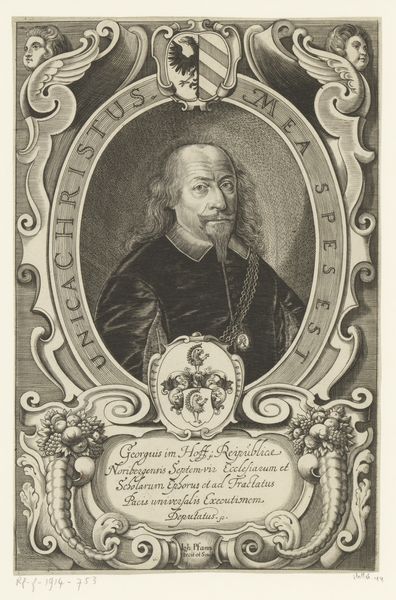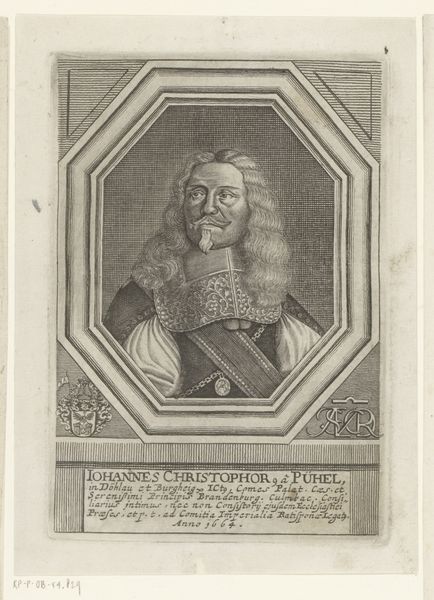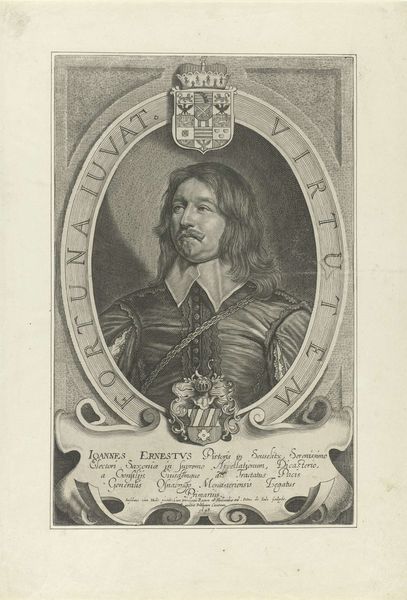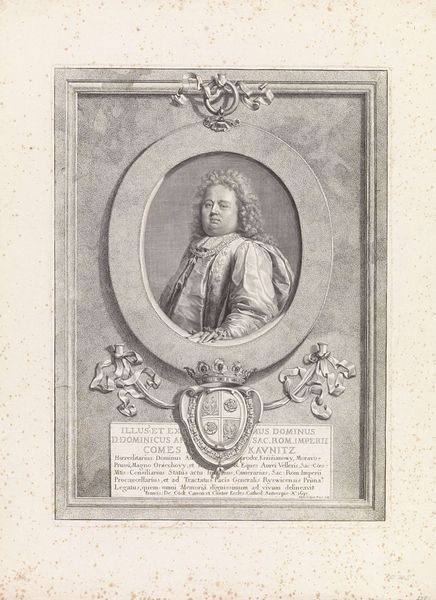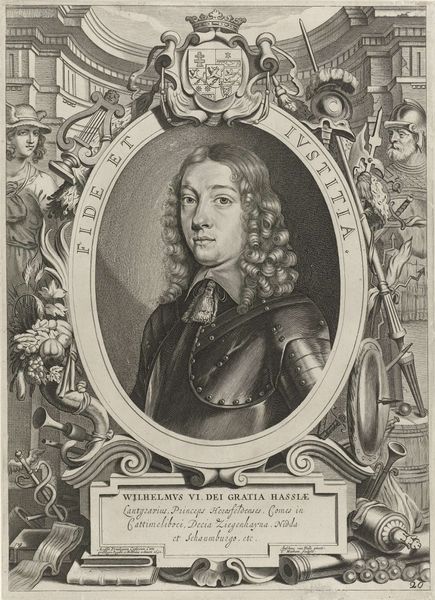
engraving
#
portrait
#
baroque
#
old engraving style
#
history-painting
#
engraving
#
columned text
Dimensions: height 308 mm, width 199 mm
Copyright: Rijks Museum: Open Domain
Curator: Before us we have “Portret van Johann Leuber,” an engraving by Pieter de Jode II, created in 1649. What are your initial thoughts? Editor: The starkness immediately grabs me; that limited palette amplifies the textures—look at the paper itself, the varied pressures in the engraved lines to get those rich blacks and subtle grays. There is this incredible graphic quality. Curator: Absolutely. The use of line is critical. Consider the meticulous cross-hatching used to define Leuber's face, to create both form and shadow. The oval frame and its ornamentation, the lettering above, the heraldry… it creates a visual language indicative of the baroque style. Editor: Thinking of those engraved lines, they speak to labor and the production of this kind of printed image. I wonder about de Jode's workshop, how many impressions were pulled, and where those might have been distributed. This isn't just about representing Leuber; it's about reproducing and disseminating that representation widely. Curator: And the semiotics! The heraldic crests at the top and bottom provide symbolic depth; these would convey aspects of his identity and standing to the viewer steeped in the period’s visual culture. And look at the Latin text! It functions as an integral element within the pictorial space. Editor: That textual element underscores the relationship between the printed image and the viewer as consumer. What meaning was inscribed into its initial circulation and now into a museum? These types of portraits served multiple functions: commemorative objects, trade between artist and publisher and a promotion of Johann Leuber image to all. Curator: Your observation helps underscore this piece’s position as not only art object but historical record, something more tangible than mere courtly display. Editor: Precisely! When we consider its place in material culture, this becomes far more than just lines on paper; it gives us ways to interpret a network of relationships in the 17th century. Curator: It adds another layer of complexity to a seemingly straightforward portrait.
Comments
No comments
Be the first to comment and join the conversation on the ultimate creative platform.

